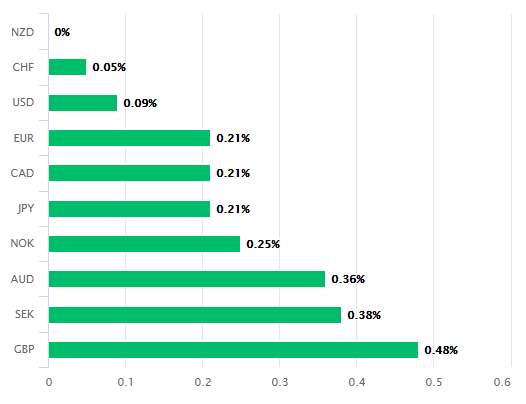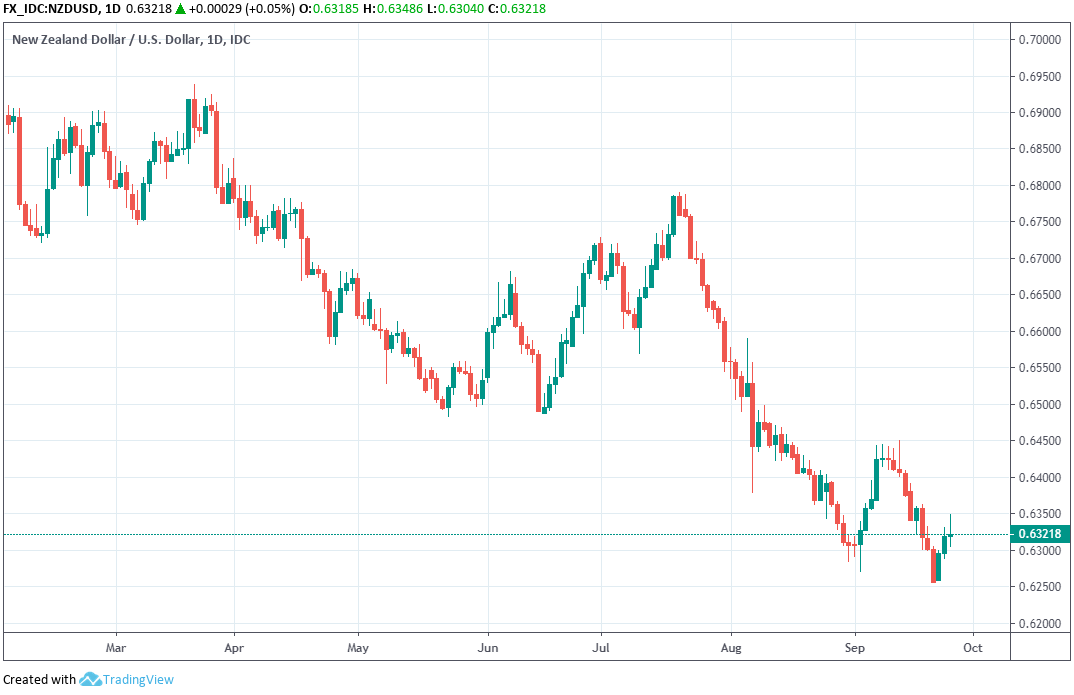The Pound-to-New-Zealand-Dollar Rate is Tipped Lower after RBNZ Puts November Rate Cut in Doubt
- Written by: James Skinner
-

Above: RBNZ Governor Adrian Orr. File Image © Pound Sterling, Still Courtesy of Financial Services Council NZ
- NZD tops board after RBNZ seen pausing rate cutting cycle.
- RBNZ says will cut again "if needed", suggesting it's on pause.
- NZD to rise further as markets still price 70% chance of Nov cut.
- TD Securities sees GBP/NZD decline after failure near 2.0 handle.
The New Zealand Dollar was higher Wednesday after the Reserve Bank of New Zealand (RBNZ) prompted investors to rethink earlier wagers that it would cut Kiwi interest rates again as soon as November, which has prompted some to tip the Pound-to-Kiwi rate for more losses in the days ahead.
RBNZ Governor Adrian Orr said Wednesday that weak growth and inflation pressures mean Kiwi interest rates can be expected to be "low for longer" and that there "remains scope" for more fiscal and monetary stimulus to support the economy "if necessary" in the months ahead. This was after he annnounced the latest decision by the Monetary Policy Committee, which was to leave the cash rate unchanged at its recently established new low of 1% for September.
The insertion of the words "if needed" into the guidance on future policy moves has led markets to believe the bank might want to wait a while and observe the impact of the 75 basis point reduction to the cash rate already announced thus far this year before moving again, which put in doubt an anticipated November cut to the cash rate.

Above: New Zealand Dollar performance Vs G10 rivals on Wednesday.
Pricing in the overnight-index-swap market had implied on Tuesday, a November 13 cash rate of 0.77%, suggesting investors saw a very high probability of a rate cut to 0.75% being announced following the RBNZ meeting on that day but by Wednesday morning the implied rate had risen to 0.80%. And some say it could rise even further still over the coming weeks, helping to lift the New Zealand Dollar in the process.
Changes in rates are normally made in relation to the outlook for inflation, which is sensitive to economic growth, but impact currencies because of the influence they have over capital flows and decisions of short-term speculators. Capital flows tend to move in the direction of the most advantageous or improving returns, with a threat of lower rates normally seeing investors driven out of and deterred away from a currency. Rising rates have the opposite effect.

Above: NZD/USD rate shown at daily intervals.
New Zealand's growth was already expected to slow over the coming years when the U.S. trade war with China flared in 2018, although it's slowed at an accelerated pace since then in part because of the impact the conflict has had on the world's second largest economy. China is the biggest buyer of New Zealand's agricultural exports but the ongoing tariff fight has put pressure on the Chinese currency, raised the cost of imports and crimped the purchasing power of consumers. That's hit Kiwi export prices.
"By itself the statement suggests that a November cut isn’t a dead certainty, with a lingering possibility that an improved environment could see the RBNZ hold fire. We still see a November OCR cut as the highly likely outcome, and have a list of several catalysts that could trigger follow-up action next year. Importantly, we expect growth will fall short of the RBNZ’s August forecast," says Nick Tuffley, chief economist at ASB Bank.
The RBNZ's reluctance to validate market bets on further rate cuts up ahead sent the Pound-to-New-Zealand-Dollar rate 0.52% lower on Wednesday, in a move that had been tipped by analysts at TD Securities, who late last week identified the British currency as being vulnerable to a downward correction and the Kiwi unit as one that was overdue some respite from the selling pressures that had helped lift the Pound-to-Kiwi rate by 3% throughout September. Brexit remains the key driver of Pound Sterling.
"We continue to look for a November rate cut, but think some of the recent weakness in NZD can unwind further near-term. Specifically, we see mounting downside risks to GBPNZD as we highlight above that sterling looks rather vulnerable against a wide swath of currencies," says Ned Rumpeltin, European head of FX strategy at TD. "The "double-top" YTD rejection of a "2" handle combined with a recently-overbought RSI adds technical merit to our fundamental views. We think a further decline to test support around 1.9415 appears to offer an attractive risk-reward opportunity."

Above: Pound-to-New-Zealand-Dollar rate shown at daily intervals.
Time to move your money? Get 3-5% more currency than your bank would offer by using the services of foreign exchange specialists at RationalFX. A specialist broker can deliver you an exchange rate closer to the real market rate, thereby saving you substantial quantities of currency. Find out more here.
* Advertisement










